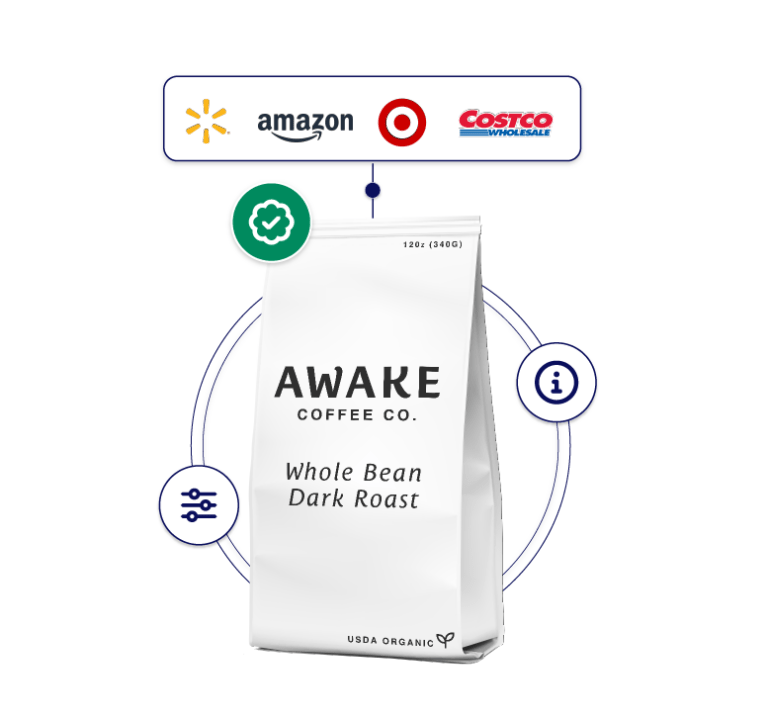How to Leverage a Single Source of Truth & Meet Product Data Requirements
September 7, 2022

Succeeding in e-commerce and omnichannel retail requires efficient, accurate and holistic product data management. When you offer hundreds or even thousands of products, and you partner with dozens of retailer sites, your team doesn’t have the time or energy to manage product listings manually.
Operating from a single source of truth empowers you to publish and manage product data at the highest level and ensures you meet product data requirements across multiple retail partners. In this article, we walk you through leveraging a single source of truth to optimize your product data and team resources, meeting various product data demands from your partner sites.
Produce Comprehensive Product Attribute Information
The first step in product data management begins long before you publish. When we think about product content, we often go to imagery, video and copy. After all, these types of content significantly shape how shoppers perceive both your products and brand.
Engaging content drives shoppers toward purchase. 1WorldSync research found that rich product content, like 360-degree imagery, incentivizes consumers to buy –– even products they didn’t think they needed.
And while rich product content is essential for your e-commerce success, it’s just part of the picture. Your product content journey begins with core item attributes that enable your retail partners to sell your product.
Every aspect of your product and packaging and all components in between must be created, verified, documented and managed by your team. From information on a Nutrition Fact Panel to package dimensions, your products carry crucial data that needs to be housed in a single source of truth.
Having a universal home for product data allows you to manage it efficiently and accurately before syndicating it to e-commerce stores.
Content Management
Creating and gathering your product content and data can be a monumental task. But then comes the cross-functional collaboration with retail partners. This challenges virtually any organization, no matter how streamlined its processes may be.
When navigating these challenges in the product content world, brands can run into incomplete, inconsistent, or inaccurate data, resulting in lost time and resources.
But if brands establish automated processes for validating and approving product content between various departments, their teams can make the most of their time and effort, and product data is correct from the start.
Push for Operational Excellence
Creating and compiling product data is essential, of course. Without your data, there’s nothing to share with trading partners. But data generation is only one step in selling goods online.
Equipping your team with the right tools empowers them to effectively manage your product data from beginning to end. Pushing for operational excellence affects all other aspects of your e-commerce success.
Housing your data in a single source of truth promotes efficiency and accuracy. It allows your team to do their jobs at the highest level, preserving resources and cultivating a work environment your teams enjoy (which has significant benefits!). Below are a few key methods that promote operational excellence.
1. Establish and Automate Workflows
Create interdepartmental content management processes. When your team can work from the same source, all parties are on the same page and workflows are streamlined. Automating these processes helps eliminate siloes and increase transparency within and among your departments. This allows for increased accountability and a better understanding of processes across your business.
2. Validate Product Content
Establish a process for validating product content internally. By focusing on accuracy and quality, you ensure all consumers receive the same accurate product information no matter where they view your listings.
Consistently accurate product data is crucial for earning trust and customer loyalty. Today’s shopper often peruses multiple product listings across multiple sites before deciding to purchase. Your content must be consistent across listings. Inaccurate and inconsistent product data raises red flags, driving customers away from your product and brand.
3. Develop Data Standards
Creating data standards and best practices ensures that everyone on your team works toward the same goal. Providing standards and practices training allows you to shape processes from day one, guiding your teams to execute their tasks correctly and in line with company practices.
4. Understand What the Retailer Wants
Every retail partner has different standards and requirements when product data is concerned. Create an organized and streamlined process that helps team members understand retailer-specific attributes.
When you prioritize actions that lead to operational excellence, like those we outlined above, you promote greater efficiency and reduce errors, resulting in better relationships with your retail partners. All these factors culminate in increased sales and greater ROI for your brand or business.
Content Delivery
You know a lot goes into managing product content. But content management is only half the challenge. Delivering that content to your trading partners can be complex, especially when data requirements vary from partner to partner.
Having a process in place that allows for seamless content syndication allows for prompt, accurate content delivery that upholds your brand integrity while meeting unique data requirements. A content syndication process provides consistency for both retailers and customers, improving loyalty and increasing your sales.
And when you work within a platform that understands your content delivery network, you can verify your content against various retailer requirements before it’s syndicated, saving you time and money.
Effective content syndication is essential for brands to win the digital shelf. Below are ways your content syndication can increase your success anywhere and everywhere your product content is found:
1. One-to-Many Model
Product content syndication allows you to operate from a single source of truth. The one-to-many model makes content management simple, fast and accurate.
2. Content Validation
The best content syndication platform will allow you to run a final validation for all retail partner requirements before you syndicate your content. This maintains positive partner relationships and data requirement standards.
3. Empower Your Teams
Leverage your product content from your single source of truth to empower your teams. Everyone wins when they have the tools needed to do their jobs well.
4. Meet Regulatory Requirements
Your products and product data must meet specific regulatory and transparency requirements. Content syndication platforms provide you with the information and guidelines to ensure every piece of data meets those standards, so you never have to make edits after you’ve delivered your product content to the retailer.
1WorldSync and Product Data Management
You don’t have the option to publish inaccurate data that doesn’t meet retailer requirements. You need an easy method of data aggregation to compete in your marketplace. Thankfully, 1WorldSync has the expertise and tools you need to leverage a single source of truth to meet the standards and requirements of your trading partners. We provide the tech you need to execute efficient processes, streamline your workflows and reach your sales goals –– whatever those may be –– with your existing team.
Reach out to 1WorldSync today so we can begin a conversation about how data syndication and a single truth source can transform how you sell.




